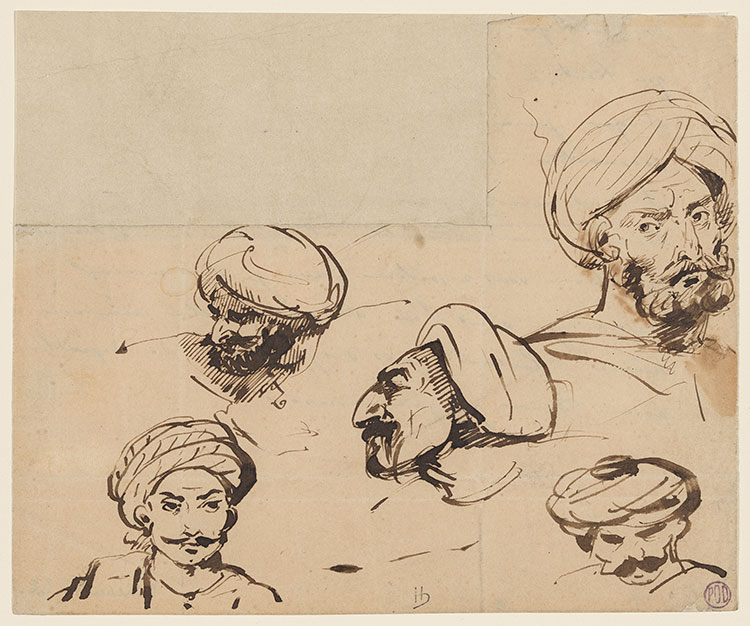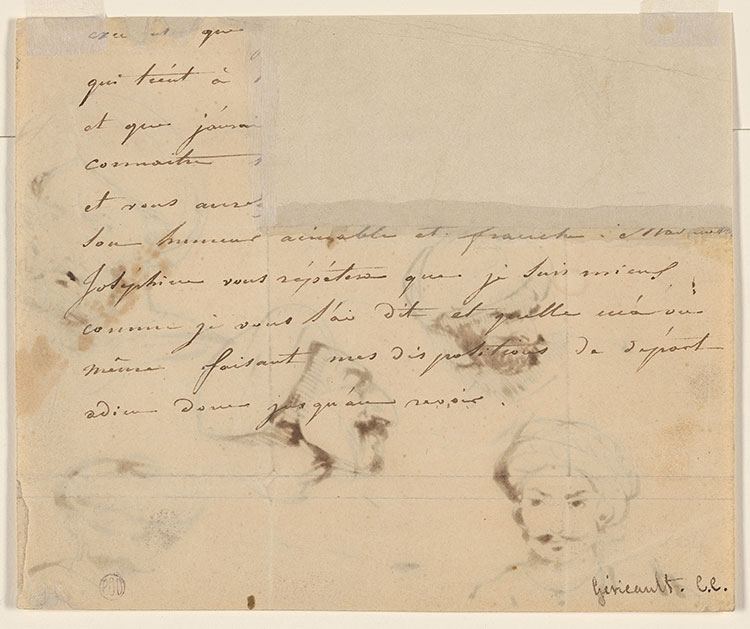

Géricault often used the paper he had at hand for sketches; in this case, it was a sheet with a note to an unknown recipient. Written in the early 1820s, he mentions that his health has improved. The sheet contains five head studies of men wearing turbans. The lower three studies feature a sitter with a broad mustache, no beard, and thick eyebrows. This man is almost certainly Mustapha Sassen, a Tunisian Arab whom Géricault hired as a manservant in 1817 and who lived with him until 1821. Mustapha served as a model for the artist (see also 2017.93) and his colleagues Vernet and Girodet. At upper left and right are head studies of an unknown man with a beard and a different style of turban.
While Géricault never traveled to North Africa or Ottoman-ruled lands, he was aware of important events such as the contemporary quest for Greek independence from Ottoman rule. He was also steeped in literary explorations of North African, Turkish, and Ottoman culture in the works of Lord Byron, whose poems such as "The Giaour" were available in recent French translations.
Stamped in black ink at lower center with the mark of Henri Delacroix (Lugt 3604); stamped in purple ink at lower right with the mark of Pierre Dubaut (Lugt S. 2103b).
Portions of autograph letters on verso legible: "Ceci fait que [...] / Qui tient à [...] / et que j'aimais [...] / connaitre [...] / et vous aurez [...] / son humeur amiable et franche Mademoiselle / Josephine vous répetera que je suis mieux / comme je vous l'ai dit et qu'elle m'a vu / même faisant mes dispositions de depart / Adieu donc jusqu'au revoir."
Cohen, Karen B., former owner.
